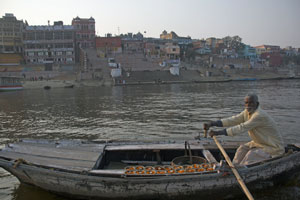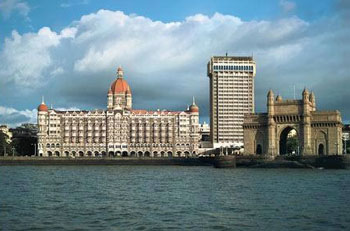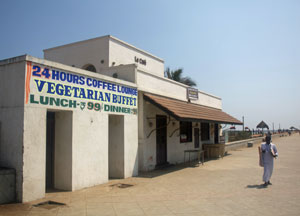At my guesthouse here in Goa I noticed a perfect-condition copy of Fodor’s India 1978 on the breakfast table. Always curious about how prices and other things have changed over decades, I plowed through it to see how we stand today compared to tourists back then. These days India is the cheapest country on earth for travelers, but was it even cheaper back then?
There are some shocking figures you’ll see below, most notably how much cheaper airfare is now compared to then. It also seems that the real budget travel scene in India was barely off the ground, as the first Lonely Planet India didn’t get published until 1981.
Some choice quotes from the book
“NIGHT LIFE: Though prohibition is not now in force in most of the country, don’t expect a gay night life in India.” (This is the opening sentence in the book’s single paragraph describing ‘night life in India,’ so the word “gay” is used in its old-timey meaning, even in 1978.)
Overland travel: “Comfortable express buses run from Munich to Tehran; there is also train service most of the way.” Then it described a combination of train and bus services through Afghanistan and Pakistan, and into India. (Iran’s borders closed after their revolution in 1979, and not many people have been able to do this since then.)
Airfare: New York to Delhi

1978
- “Excursion fares” in coach = US$854 (US$2,884 in 2011 dollars)
- “Regular fares” in coach = US$1,800 (US$6,080 in 2011 dollars)
- “Regular fares” in first class = US$2902 (US$9,802 in 2011 dollars)
2011
- Cheapest coach fare = US$922 (on Aeroflot)
- Cheapest first class fare = US$5,132 (on Continental)
With 1978, as you may recall, being the year of the Airline Deregulation Act in the United States, prices began dropping shortly after this book was published. It’s not clear how easy it was to find an “excursion fare” back then, and the book further discusses the “regular fare” as more typical.
Bottom line
The bottom line is that fares on this route are less than a third in 2011 than in 1978 if you adjust for inflation. Among other things, this meant that very few backpacker-types could afford to fly from the US to India, even if it was cheap once they got there.
Hotel prices

1978 = 8 rupees to US$1; 2011 = 45 rupees to US$1
1978
- De Luxe Hotel in major city = Rs350 to Rs450 (US$44 to US$54 at the time)
- First Class hotel = Rs200 to Rs350 (US$25 to US$44)
- Second Class hotel = Rs130 to Rs200 (US$16 to US$25)
- Third Class hotel = Rs85 to Rs100 (US$10.60 to US$12.50)
2011
- Mumbai – Taj Mahal Palace and Towers = US$244
The above hotel is mentioned in the book as “top of the range” and it continues to be one of the most expensive hotels in India.
- 4-star hotel in Mumbai = US$95 and up
- 3-star hotel in Mumbai = US$72 and up
- 2-star hotel in Mumbai = US$33 and up
Bottom line
It’s hard to tell for sure based on this book, but generally it seems that hotels in India have risen in price at a rate similar to relative inflation, so they are just as expensive (or cheap) for today’s travelers as they were for visitors in 1978.
However, the book doesn’t mention the amazing abundance of basic 1-star hotels throughout India, where even in 2011 you can get a private room starting around US$2 per night in smaller towns, or usually US$5 to US$10 in large cities. Perhaps long-distance visitors never considered such places in 1978, based on the high airfares, or maybe most of them didn’t even exist back then?
Restaurant prices

1978
- Deluxe in a major city = Rs150 (US$21 at the time)
- First class = Rs70 to Rs150 (US$9 to US$21)
- Moderate = Rs40 to Rs60 (US$5 to US$7.50)
- Inexpensive = Rs20 to Rs40 (US$2.50 to US$5)
2011
Prices, at least converted into US dollars, haven’t risen all that much since 1978. The book doesn’t mention whether their price includes dessert and a cocktail, but generally you can still find meals in major cities that fit into these 1978 prices. Doubling the converted prices is probably a better range for 2011.
Bottom line
It appears that either the Fodor’s people assumed visitors would only be eating Western food in air-conditioned hotel restaurants, or food prices haven’t risen too dramatically since 1978. Even in 2011, it’s not difficult to find full meals for under US$2, as mentioned in our recent article about India: the cheapest country in the world.
Taxi prices
Then as now, India is known for incredibly cheap taxi prices. In fact, Delhi comes out on top as cheapest in our World Taxi Prices article.
1978
- 3-kilometer taxi ride = Rs3.20 (US$0.40 at the time)
2011
- 3-kilometer taxi ride = Rs50 (US$1.10)
Bottom line
Taxi prices seem to have moved with the relative inflation rates, so they’ve always been a fantastic bargain for visitors to India.
Conclusions of 1978 to 2011
The most obvious conclusion to make is that international airfares are much more affordable today than they were in 1978, which means that far more people have the chance to take such trips. Those who constantly complain about high airfares and abusive service might do well to realize that most of our equivalents in decades past were far worse off.
Based on these high airfares, it’s easy to conclude that few hippies and scruffy backpackers were able to fly halfway around the world at the time. Tony and Maureen Wheeler toured India in the mid-70s, and didn’t publish the first Lonely Planet India guidebook until 1981.
Since then, long-distance travel has become affordable for students and others in the lower income rungs, and now India in particular is still incredibly cheap once you arrive.
For budget travelers and other curious people, we might be living in the golden age of affordable travel, or at least things are far cheaper than they were in 1978.

Hey thanks for the great article. How things have changed… for one, we realized that doing as the Romans do is the best way to go.
I’ve been going to India (total 20 trips) since the middle 70’s. Yes, there is always a cheaper place to stay. The cleanest, and best food, also the cheapest rooms are the thousands of Ashrams in India, where you can still get a single room with a rope cot and blanket for the price of a donation. The food is simple and filling and healthy. Also the Goverment bungalows if available, are very clean and cheap, and are in some of the most beautiful places.